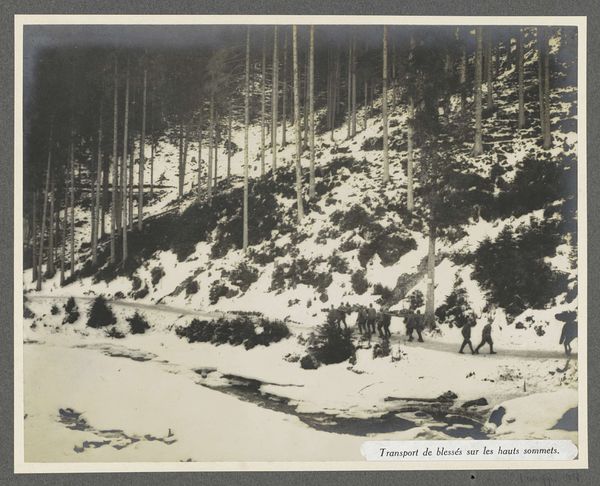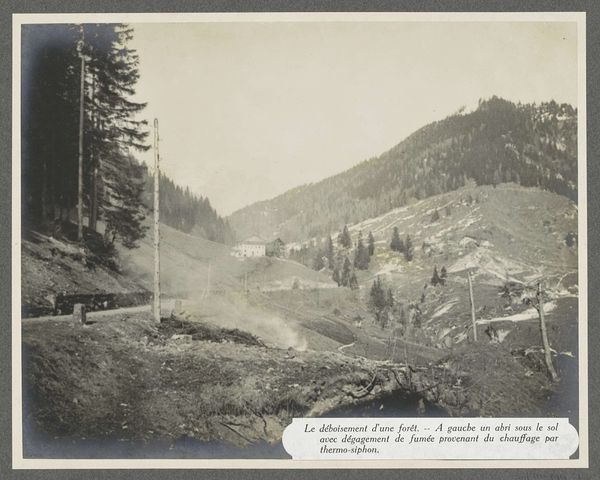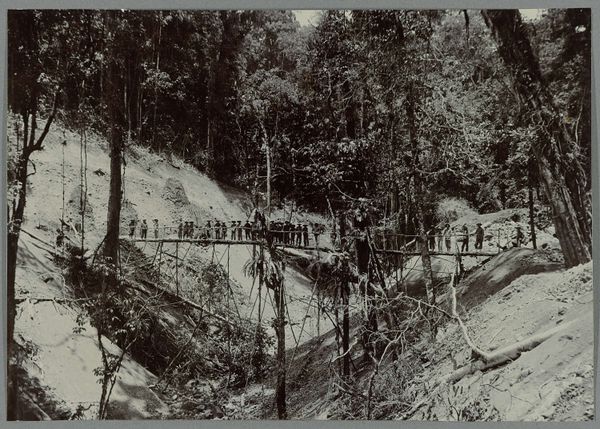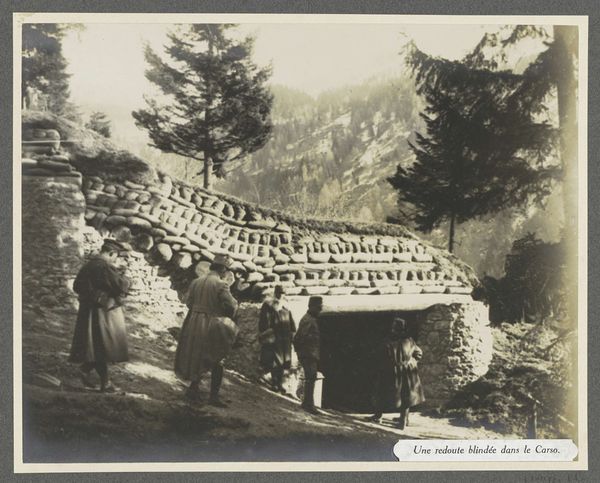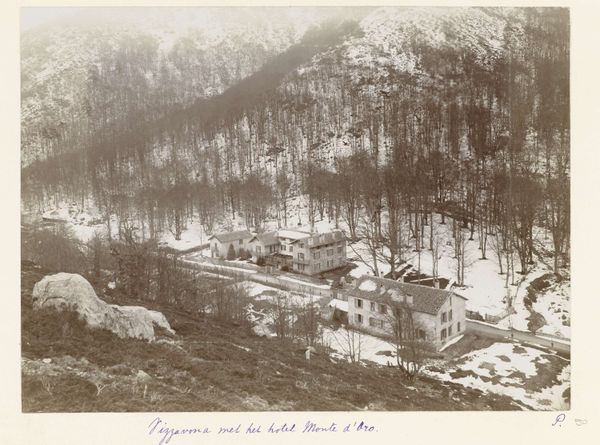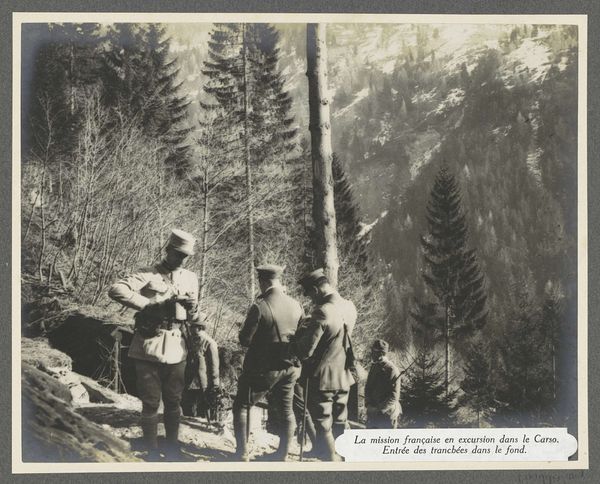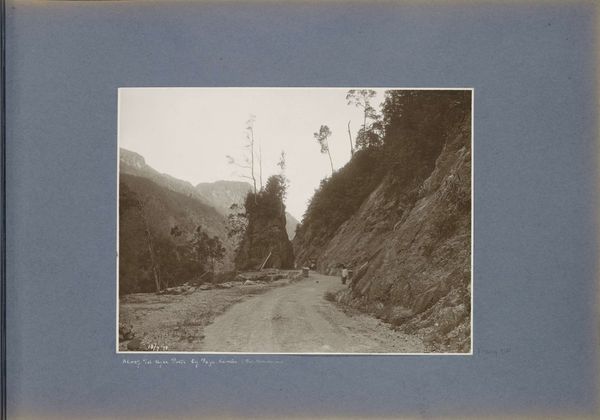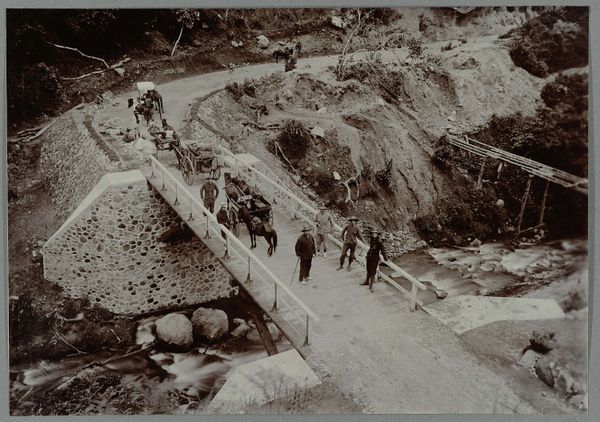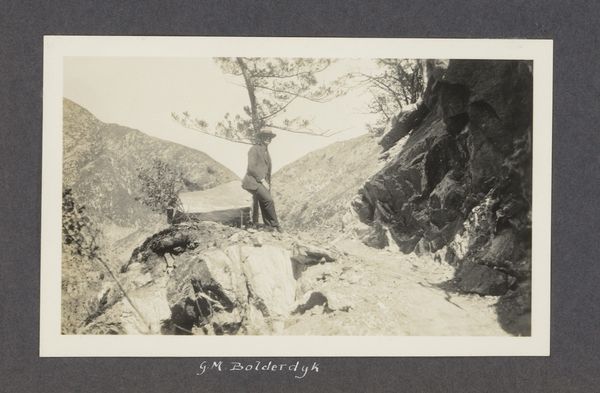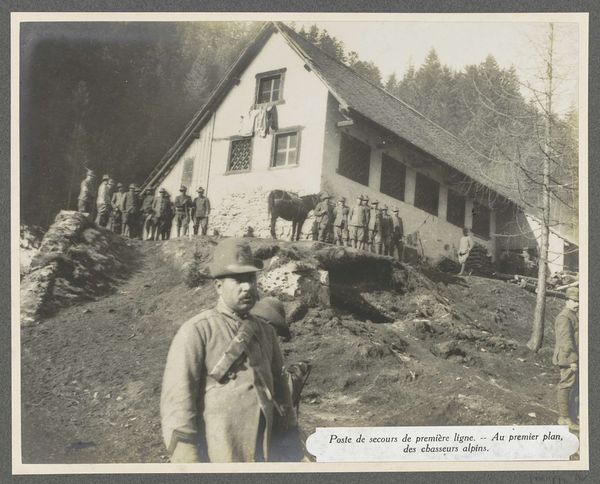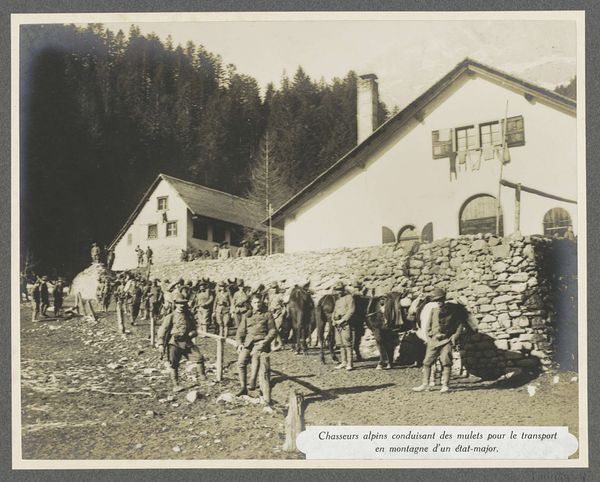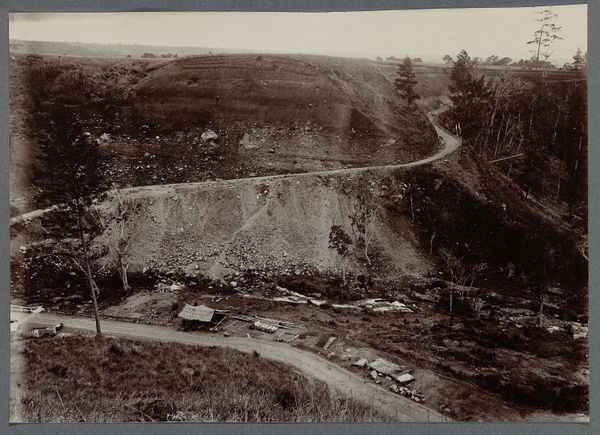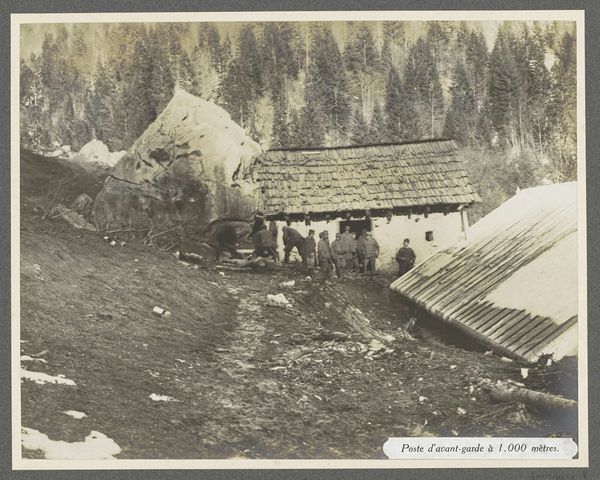
print, photography, gelatin-silver-print
#
portrait
# print
#
desaturated colours
#
war
#
landscape
#
archive photography
#
street-photography
#
photography
#
historical photography
#
desaturated colour
#
road
#
gelatin-silver-print
#
realism
Dimensions: height 218 mm, width 280 mm
Copyright: Rijks Museum: Open Domain
Curator: Henri de Rothschild's 1916 gelatin-silver print, "Ingang van loopgraven bij een weg in de Dolomieten", presents a striking vista of war. It plunges us into a scene both grand and utterly bleak. What catches your eye first? Editor: The overall tonality—desaturated, almost ghostly. It perfectly encapsulates the somber mood, an unnerving calm before an unseen storm. The stark contrast between the rugged terrain and the implied human presence creates a sense of unease. Curator: The photograph masterfully orchestrates spatial relationships to heighten tension. The path, a recurring motif in war photography, leads the eye inexorably toward the mountains. What are your thoughts on its visual arrangement? Editor: It’s about paths and boundaries: civilization and desolation; life and potential death. Observe how the sharp, receding lines of the landscape converge with the soldiers. It emphasizes not only their literal position but also their precarious placement within history itself. I would also note the framing of nature surrounding all of these, creating a feeling of a dream and uneasiness that it brings. Curator: Exactly. This photograph serves as a powerful reminder of the scale and the scope of human endeavors and that of landscape during conflict. It illustrates the interweaving of personal narrative and large scale impact of decisions for the benefit of so few. Editor: Absolutely. By depicting this stark landscape with soldiers swallowed within the image, it urges the viewer to ponder on what role nature is placed within all of this human suffering, as well as the personal toll taken. There is also very small almost unnoticable figure on the right-hand side; it shows us a sense of intimacy within the subject. Curator: That’s a poignant observation. This print encapsulates not only the specific realities of the First World War but also raises enduring questions about landscape, identity, and humanity's imprint. Editor: I agree; and the use of photography as a visual rhetoric only further reinforces these points. Photography during the time and place serves as another mode in which human kind attempts to achieve great achievement or destruction of one another. Curator: It's remarkable how a single photograph can compress so many layers of meaning, historical weight, and emotive force. Editor: A sobering yet necessary reminder.
Comments
No comments
Be the first to comment and join the conversation on the ultimate creative platform.
